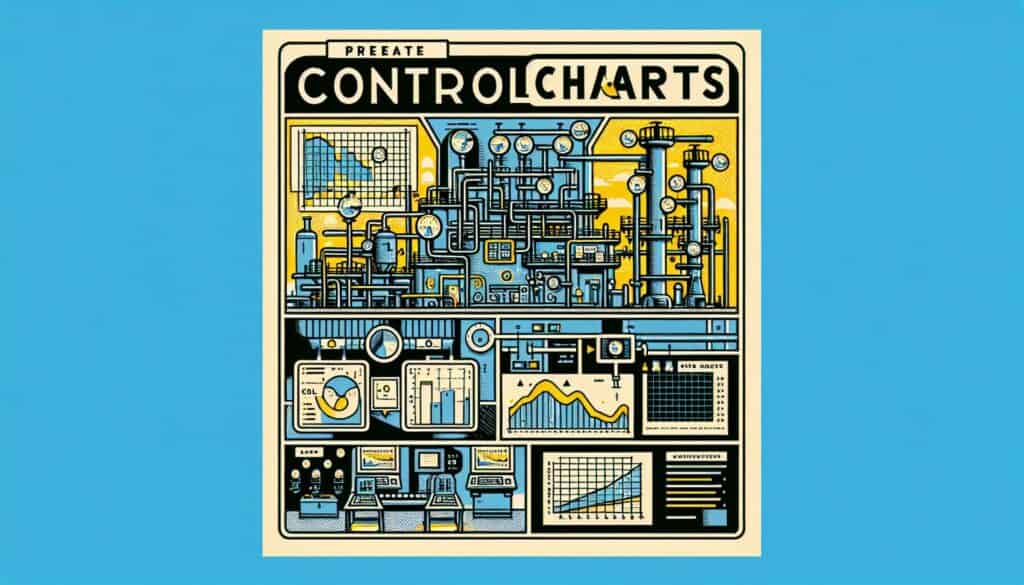To prevent the production of non-conforming products by monitoring process settings at startup and during runs, using wider zones than control charts.
- Methodologies: Customers & Marketing, Ideation, Product Design
Pre-Control Charts

Pre-Control Charts
- Continuous Improvement, Error Prevention, Lean Manufacturing, Process Capability, Process Improvement, Production Efficiency, Quality Assurance, Quality Control, Statistical Process Control (SPC)
Objective:
How it’s used:
- A simple statistical tool where operators check a small number of consecutive parts against specification limits divided into green (center), yellow (caution), and red (stop) zones. Adjustments are made based on where the parts fall.
Pros
- Simple to understand and use by operators; Provides immediate feedback on process stability; Focuses on defect prevention rather than just detection; Requires less data collection than traditional SPC charts.
Cons
- Less statistically rigorous than Shewhart control charts; May not detect small process shifts as effectively; Relies heavily on operator discipline and correct interpretation.
Categories:
- Manufacturing, Quality
Best for:
- Providing a simple, operator-driven method for process control at the point of manufacture, particularly useful for short runs or where full SPC is impractical.
Pre-Control Charts serve as an effective tool for quality management and can be particularly advantageous in industries such as automotive, electronics, textiles, and food processing, where production often involves a significant number of distinct parts produced in short runs. This methodology is often utilized during the manufacturing phase, particularly in environments where rapid adjustments are necessary due to fluctuations in production or when implementing new processes. Operators and front-line workers, who are familiar with the production intricacies, typically initiate this approach, allowing for prompt decision-making based on real-time data. The simplicity of Pre-Control Charts makes them accessible for users without advanced statistical training, providing immediate visual cues through a straightforward color-coded system that delineates acceptable and unacceptable performance. This enables teams to engage more actively in the monitoring process, fostering a culture of defect prevention rather than merely waiting for issues to be identified through more extensive statistical process control (SPC) mechanisms. Since the methodology requires less rigorous data collection, it allows companies to allocate resources efficiently, minimizing downtime and increasing responsiveness to quality issues. Furthermore, firms may find that integrating Pre-Control Charts into their workflows not only improves process reliability but also enhances the overall skill set of their workforce, empowering operators to take ownership of quality outcomes while effectively collaborating across departments for continuous improvement initiatives.
Key steps of this methodology
- Define the specification limits for the product.
- Determine the number of consecutive parts to be checked.
- Inspect each part against the defined limits.
- Classify the results into green, yellow, or red zones based on specifications.
- Implement immediate adjustments if parts fall into yellow or red zones.
- Continue monitoring the process and inspecting subsequent parts.
Pro Tips
- Ensure clear criteria for green, yellow, and red zones, involving operators in the definition process to enhance ownership.
- Implement regular training on reading and interpreting Pre-Control Charts to maintain operator engagement and competence.
- Utilize historical data to set realistic specification limits, allowing for continuous adjustments based on verified performance trends.
To read and compare several methodologies, we recommend the
> Extensive Methodologies Repository <
together with the 400+ other methodologies.
Your comments on this methodology or additional info are welcome on the comment section below ↓ , so as any engineering-related ideas or links.
Historical Context
1962
1970
1972
1980
1980
1986
1986
1960
1963
1970
1980
1980
1980
1986
1987
(if date is unknown or not relevant, e.g. "fluid mechanics", a rounded estimation of its notable emergence is provided)















Related Posts
Musculoskeletal Discomfort Questionnaires
Multivariate Testing (MVT)
Multiple Regression Analysis
Motion Capture Systems
MoSCoW Method
Mood’s Median Test